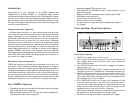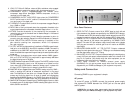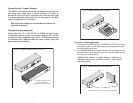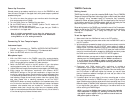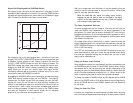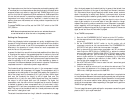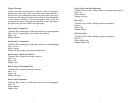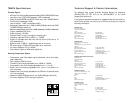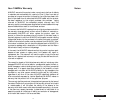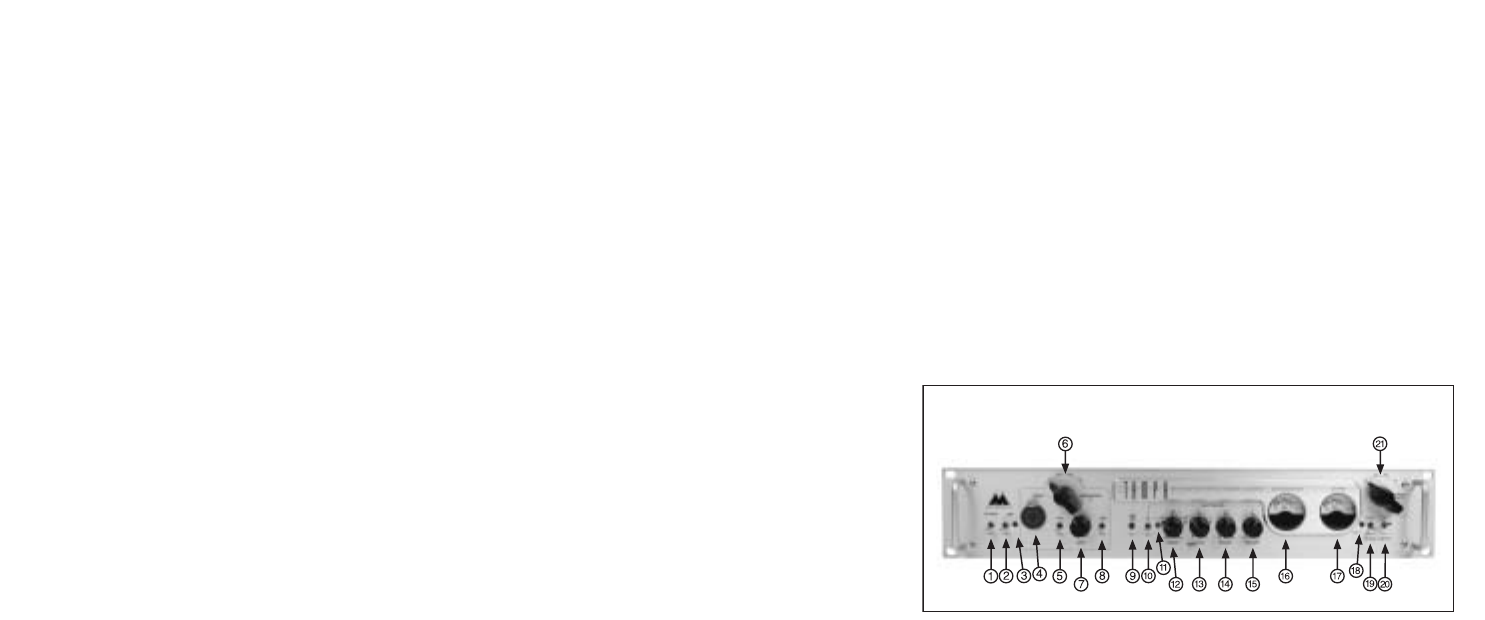
3
Introduction
Congratulations on your purchase of the TAMPA, designed and
manufactured by M-Audio. TAMPA is a professional, single channel
microphone/instrument preamp unlike any other.That’s because our design
team set out to discover just why expensive tube technology sounds so
good, and devise a way to land that sound at affordable solid state prices.
The result is far beyond tube modeling. It’s a whole new technology called
Temporal Harmonic Alignment™.
Temporal Harmonic Alignment
—the Secret Behind the Sound: In natural sound sources such as strings,
drum heads and vocal chords, harmonics share a characteristic temporal
(phase) relationship to the fundamental. Our ears exhibit the same
qualities. Solid state electronics induce distortion in the form of additional
harmonics that are out of phase with the original source. Tube-based
devices strike the ear as having such a “warm” sound because the added
harmonics have the same temporal relationship as natural mechanisms
(although predominantly in the midrange).This results in a sweet spot that
makes vocals, guitars and other midrange-rich content sound especially
pleasing. TAMPA’s revolutionary new Temporal Harmonic Alignment
technology produces that same phase relationship found in both tubes and
nature. And unlike tubes,TAMPA’s sweet spot spans the full spectrum of
your sound—from bass to cymbals.
Dual Optical Servo Compressor
TAMPA also includes a dual optical servo compressor that is worth the
price alone. Three fundamental problems plague engineers in designing
compressors—distortion, noise and accuracy.The VCA technology used in
inexpensive compressors exhibits less than professional specs on all three
counts. Simple optical servo technology is much more quiet and accurate,
yet has its own issues with distortion.The dual optical servo technology
we use in TAMPA yields low noise, consistent accuracy, low distortion and
exceptional transparency—and it comes built-in to a great mic preamp.
Your TAMPA’s Features
•Professional mic/instrument preamp with Temporal Harmonic Alignment
• Built-in dual optical servo compressor
• Balanced phantom-powered XLR mic input with variable impedance for
optimized performance with vintage mics
2
• Balanced/unbalanced TRS instrument input
• 24-bit digital S/PDIF and AES/EBU output for direct connection to your
digital recording gear
• 20dB gain switch for an amazing maximum system gain of 66dB
• 20dB passive output pad switch
•Low-cut switch to eliminate rumble
• Discrete, class A circuitry throughout
•VU-style meters for output level and compression gain reduction
• Clip indicator
Front and Rear Panel Descriptions
Front Panel Features
1. POWER:Turns master power on/off for the unit.
2. +48V: Provides 48-volt phantom power to the XLR microphone input
when engaged. Switch to the ON position when using a microphone
requiring phantom power.
3. +48V INDICATOR: Lights when +48V switch is engaged to indicate that
phantom power is on.
4. MICROPHONE/INSTRUMENT: Neutrix connector accepts both an XLR
microphone input and a 1/4” TRS balanced or TS unbalanced instrument input.
5. INST/MIC: Switches between instrument and microphone inputs. Set to
“INST” when using the 1/4” input jack, and set to “MIC” when using the
XLR input jack.When INST is selected, the XLR input is disabled,and when
MIC is selected, the 1/4” input is disabled.
6. INPUT IMPEDANCE: Allows user to select input impedances of 2400
ohms, 1200 ohms, 600 ohms or 300 ohms. This is particularly useful in
conjunction with vintage mics requiring one of these impedances.For many
modern mics, the recommended setting is 2400 ohms, though the load
impedance setting is much more critical for vintage mics.
7. GAIN: Master preamp gain where fully counterclockwise yields minimum
gain (0db) and fully clockwise delivers maximum gain (34dB).
8. +20dB: Provides an additional 20dB of preamp gain when engaged.
Figure 1 - TAMPA Front Panel Features




